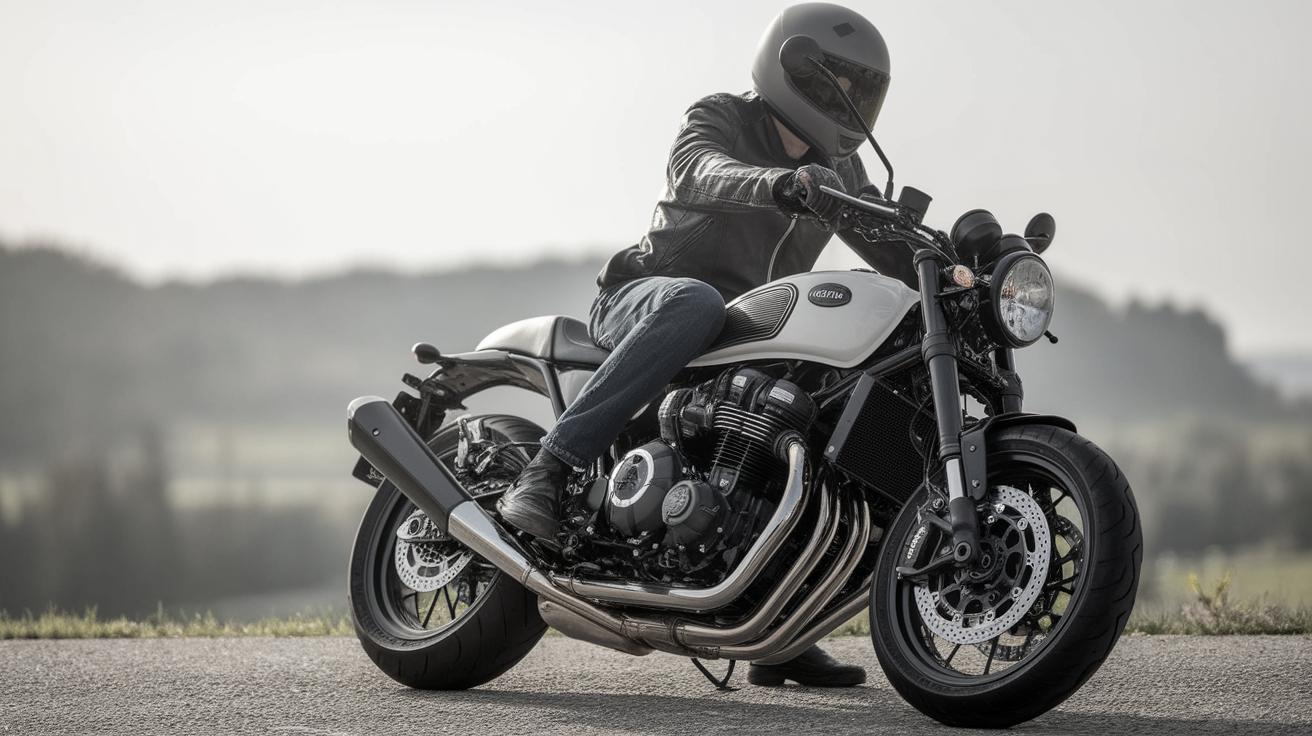Radial vs. Bias-Ply Motorcycle Tires
In the world of motorcycle tires, understanding the differences between radial and bias-ply tires is crucial for riders who want to make informed decisions. This blog post dives deep into the distinct characteristics, advantages, and disadvantages of each type, helping you better understand their impact on performance, safety, and versatility. We’ll explore the tire construction methods, their suitability for different riding styles, and even touch on the history of these tire types. Whether you’re a daily commuter or an adventure-seeker, this article provides insights tailored to enhance your riding experience. Prepare to embark on a detailed exploration of radial and bias-ply tires to determine the best fit for your motorcycle.
Understanding Tire Construction: Radial vs. Bias-Ply
The fundamental difference between radial and bias-ply tires begins with their construction. Radial tires are known for their unique architecture where cords move radially across the tire, i.e., from the center of the tire moving outward to the rim. This type of construction allows the sidewalls and the tread of the tire to function independently, offering a smoother and more comfortable ride, particularly at high speeds.
Conversely, bias-ply tires are constructed with cords that crisscross in a diagonal pattern, typically at angles of 30 to 45 degrees, over the tire’s structure. This design integrates the tread and sidewall, making them act as a single unit. Historically, bias-ply was the default style for motorcycle tires due to its simpler manufacturing process and improved durability in certain conditions. Both types have evolved over time, integrating advanced materials to boost performance.
Performance Differences and Rider Experience
When it comes to performance, radial tires are typically favored for their ability to maintain stability at high speeds. The independent sidewall and tread movement afford greater flexibility, improving the contact patch with the road, thereby increasing grip. This is especially beneficial for sport riders and touring bikers who demand precision and efficiency on both highways and winding roads.
On the flip side, bias-ply tires are praised for their robustness and load-carrying capabilities. The interconnected construction provides more rigid support, lending itself well to off-road biking and motorcycles carrying heavier loads. These tires offer a more traditional feel, which some riders find reassuring, particularly in environments that radically shift in terrain.
Suitability for Different Riding Styles
Your riding style is a significant factor in determining which type of tire is more suitable. For sport bikers who thrive on speed and agility, radial tires are often the go-to choice due to their superb handling characteristics and reduced rolling resistance, which can also improve fuel efficiency.
Alternatively, bias-ply tires cater to cruisers and off-road enthusiasts who value durability and stability over speed. Their tough sidewalls can withstand the demands of rough roads and long-distance rides, making them desirable for adventure riders who encounter unpredictable conditions. It’s about matching the tire’s inherent strengths to your personal riding needs.
The Evolution of Tire Technology
Historically, bias-ply tires dominated the motorcycle market due to their straightforward manufacturing and robust resilience. However, as technological advances emerged, radial tires quickly gained traction, especially in the automotive industry before making their mark in motorcycling.
Radial technology significantly evolved during the latter half of the 20th century, using materials such as Kevlar and steel belts to enhance durability and responsiveness. Today, motorcyclists can find sophisticated versions of both radial and bias-ply tires, designed using a mix of innovative compounds and tread patterns aimed at optimizing performance for specific needs. This diversification within the tire industry demonstrates the ongoing quest for excellence in rider safety and comfort.
Cost Implications and Market Trends
The cost aspect is crucial for motorcycle owners deciding on tire replacement. Typically, radial tires come at a higher price point due to their advanced construction and material usage. The investment, however, is often justified by the improved performance and extended longevity they offer.
Bias-ply tires, conversely, present a more budget-friendly option and are regularly the choice for riders prioritizing short-term cost savings or those whose riding style naturally fits this tire type. Regardless of choice, market trends suggest a gradual incline in radial tire adoption, indicating a shift towards higher performance expectations from everyday riders.
Related Posts:
-
How to Choose the Right Motorcycle Tire for Your Needs
-
Tips for Maintaining Motorcycle Tires Through Changing Seasons
-
Understanding Tire Markings and What They Tell You
Summary of Main Points
| Aspect | Radial Tires | Bias-Ply Tires |
|---|---|---|
| Construction | Radially aligned cords; independent sidewall and tread operation | Crisscross diagonal cords; interconnected sidewall and tread |
| Performance | Stability at high speeds; improved grip and efficiency | Robustness; better load support and durability |
| Riding Style Suitability | Sport and touring riders | Cruising and off-road riders |
| Technology Evolution | Advanced materials like Kevlar and steel belts | Traditional resilience remained strong over time |
| Cost | Higher; justified by performance and longevity | Lower; suitable for budget-friendly needs |

Laisser un commentaire